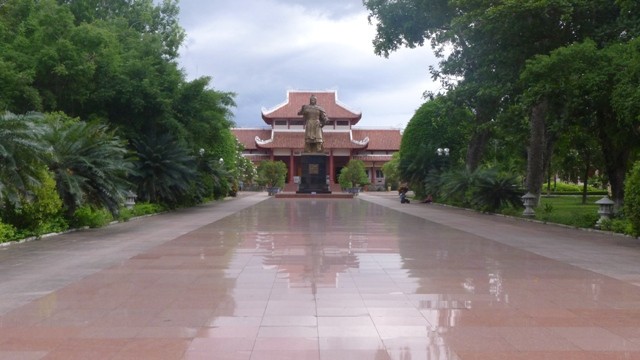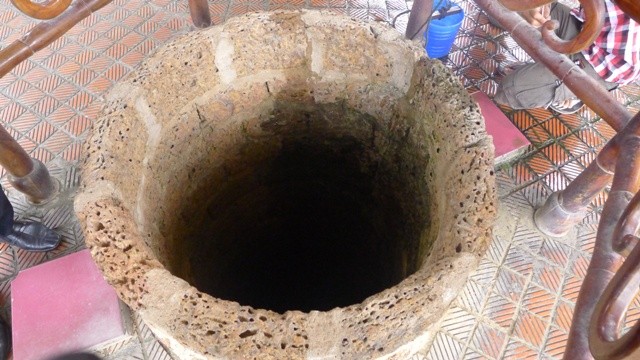(VOVworld) - Located in the southern part of the central region, Binh Dinh province is not only known as the land of Vietnamese traditional martial arts but also the birthplace of King Quang Trung, leader of the Tay Son uprising at the end the 18th century. The museum dedicated to this national hero is a historic landmark attracting both Vietnamese and foreign researchers and tourists.
 |
Quang Trung museum was built in his native village, Kien My, 40km west of Quy Nhon city. Inaugurated in 1978, it is one of the largest museums dedicated to famous Vietnamese personalities. It is also one of the busiest attracting researchers and tourists. In the museum, the Tay Son shrine, which worships the heroes of the Tay Son movement, was the first stop of visitors. Tran Ngoc My, the guardian of the shrine, says: "This shrine was built on the site of the former home of the three founding brothers of the Tay Son movement. It includes 10 altars. In the center are the ancestral altar and an altar dedicated to the three brothers. Those two sides are reserved to worship the military leaders of Tay Son. Finally, there is an altar dedicated to the Nguyen dynasty."
Outside the shrine are a tamarind tree and a 300-year-old well. Tamarind symbolizes the vitality of the movement of the Tay Son movement in the nation. The old well continues to give clear and fresh water. Dang Cong Lap, a Quang Trung museum guide, explains the story: "In the past, this well had no walls. These laterite walls have recently been added. Previously, all people in the hamlet used water from this well. This laterite is easy to find in the region and helps purify water. The citadel of the Emperor is also made of laterite".
 |
The exhibition house in the museum features more than 11,000 documents and objects dating back to the reign of the Tay Son. The exhibition helps visitors better understand the glorious period of history and the outstanding King of the nation. Among these objects, there is a drum made of elephant leather of the central highlanders who participated in the Tay Son movement, as well as official seals, royal recognition certificates, family annals of military officials, bronze bells, ancient coins and especially the ancestral tomb stele of Tay Son. Dang Cong Lap says: "This is the tomb of the paternal grandfather of the three Tay Son brothers. It was found in 1990 by chance by residents of Phu Lac, the home village of the Tay Son brothers’ mother. Dragons are carefully engraved on the stele. "
Martial arts and military drum playing performances are considered the two intangible heritages of Tay Son. Visitors can learn more about the arts in this museum. Vo Thi Thuan is heir to a family in which 9 generations have played military drums. She inspires visitors with a performance of playing 12 drums" "The concert is divided into three parts. The first indicates the departure of soldiers. At this time, the pace is rather moderate. The second part is entitled "besiege the citadel." The pace picks up. The last part is a triumphant song, expressing great joy. "
The three Tay Son brothers and especially the national hero Quang Trung Nguyen Hue were the leader of peasant insurrections in the late 18th century turning them into a national movement wiping out foreign invaders sustainably defending national independence from 1788 to 1802. Nguyen Duc Tri, a visitor from the province of Ha Tinh, told VOV: "Before visiting the museum, I knew about King Quang Trung through books. Here, I see with my own eyes the objects and hear explanations of the history and development of the Tay Son movement. My knowledge is enriched and I can pass them on to my children. "
More than a historical site, the Quang Trung Museum is a tourist attraction in Binh Dinh province. This is a must-see for anyone wishing to learn about the glorious past, the courage and the indomitable spirit of the Vietnamese people.